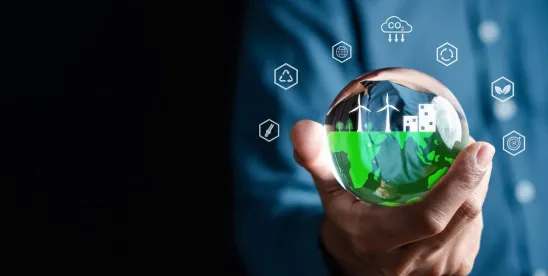New York’s Climate law, the Climate Leadership & Community Protection Act (CLCPA), set a bold target to achieve 70% of its electric generation capacity from renewable sources by 2030. That same law requires the state to issue biennial reports on its progress of reaching the statute’s goals. Issued July 2024, the Draft Clean Energy Standard Biennial Review concluded that, while the state had made significant progress in incentivizing and building renewable sources of energy such as wind and solar, it would fall short of achieving the 70% target by 2030. The report predicted that the state would more likely achieve the target by 2033. Additionally, shortly after the biennial report, the State Comptroller’s office released an audit indicating that the goals would not be met and highlighting several areas where progress is lagging.
Some highlights from the biennial report include:
- As of year-end 2022, renewable resources supplied 25.1% of the state’s electric load, totaling 38,061-gigawatt hour (GWh).
- Combined renewable and zero-emission generation, including nuclear, accounted for 46.1% of the statewide load at the end of 2022, amounting to 70,053 GWh.
- New projects that became operational between Jan. 1, 2023, and June 1, 2024, added significant capacity: 222 GWh from solar, 1,559 GWh from land-based wind, and 464 GWh from offshore wind.
However, the report highlights several challenges:
- Economic Conditions: High interest rates and inflation have increased project costs, making renewable energy developments less financially viable. Supply chain disruptions, exacerbated by the COVID-19 pandemic and geopolitical tensions like the Russian invasion of Ukraine, have caused delays and higher costs for energy-related equipment.
- Transmission and Interconnection: The state’s grid requires substantial upgrades to handle the increased renewable generation. Over $5 billion in transmission investments have been approved to enhance capacity and reliability, but the process for completing these upgrades to the grid remains slow and costly.
- Capacity Market Changes: Adjustments in the market valuation of renewable energy capacity are necessary to reflect its true contribution to system reliability. These changes are essential for maintaining a balanced and reliable energy grid.
- Federal Support: Legislation like the Inflation Reduction Act provides significant financial incentives for renewable energy projects, playing a crucial role in mitigating some economic challenges.
The report offers several key recommendations to address these obstacles:
- Increasing annual procurement targets for large onshore wind and solar projects and extending these processes to 2029.
- Enhancing the distributed solar target to 10 GWh by 2030.
- Allowing utilities to invest in renewable generation, potentially lowering borrowing costs and enhancing project viability.
New York’s recognition that it would miss its first major target has been met with consternation in some circles. This consternation is understandable given the ambitious nature of the goals set. However, while targets may be useful to ensure that goals are translated into reality, the sky will not fall if the statutory target is missed. Indeed, the CLCPA itself recognized that achieving the target could not be exalted above other requirements such as ensuring a reliable grid that meets energy demand. The latest report reflects significant progress in developing zero greenhouse gas (GHG) emission sources, identifying continued challenges to transforming the energy mix of a state as large and populous as New York. The CLCPA does identify interim milestones, which provide an objective basis for evaluating this progress. While some of the challenges, such as prolonged siting of new projects, have been somewhat self-inflicted, other challenges such as supply chain issues and inflation following the COVID-19 pandemic, were unforeseen. Moreover, the financial magnitude and complexity of the transmission upgrades necessary to get this new generation to the areas of load demand were always going to make meeting the 2030 target difficult. Despite the recognition of a modest delay in meeting the target, the state’s commitment to renewable energy is evident in the strides made thus far.
Going forward, the economic conditions described in the report are likely to continue to pose challenges to New York’s energy transformation. High interest rates and inflation, coupled with global supply chain disruptions, have placed immense pressure on project costs and timelines. Transmission and interconnection issues are another critical area, and the report makes clear that the state is going to continue focusing on streamlining the process of connecting new projects to the grid.
Bottom line, the report seeks to demonstrate that there is merit to setting aggressive timelines when policymakers seek to undertake significant transformations of essential infrastructure. The report also implicitly acknowledges that it is appropriate to recognize when aggressive targets will not be met because such recognition maintains credibility for the larger endeavor. New York’s recent biennial assessment should not be viewed as a retrenchment in the state’s commitment to renewable generation and the infrastructure needed to support it, but rather a pragmatic recognition of reality and the challenges that remain to achieve those goals.




 />i
/>i

